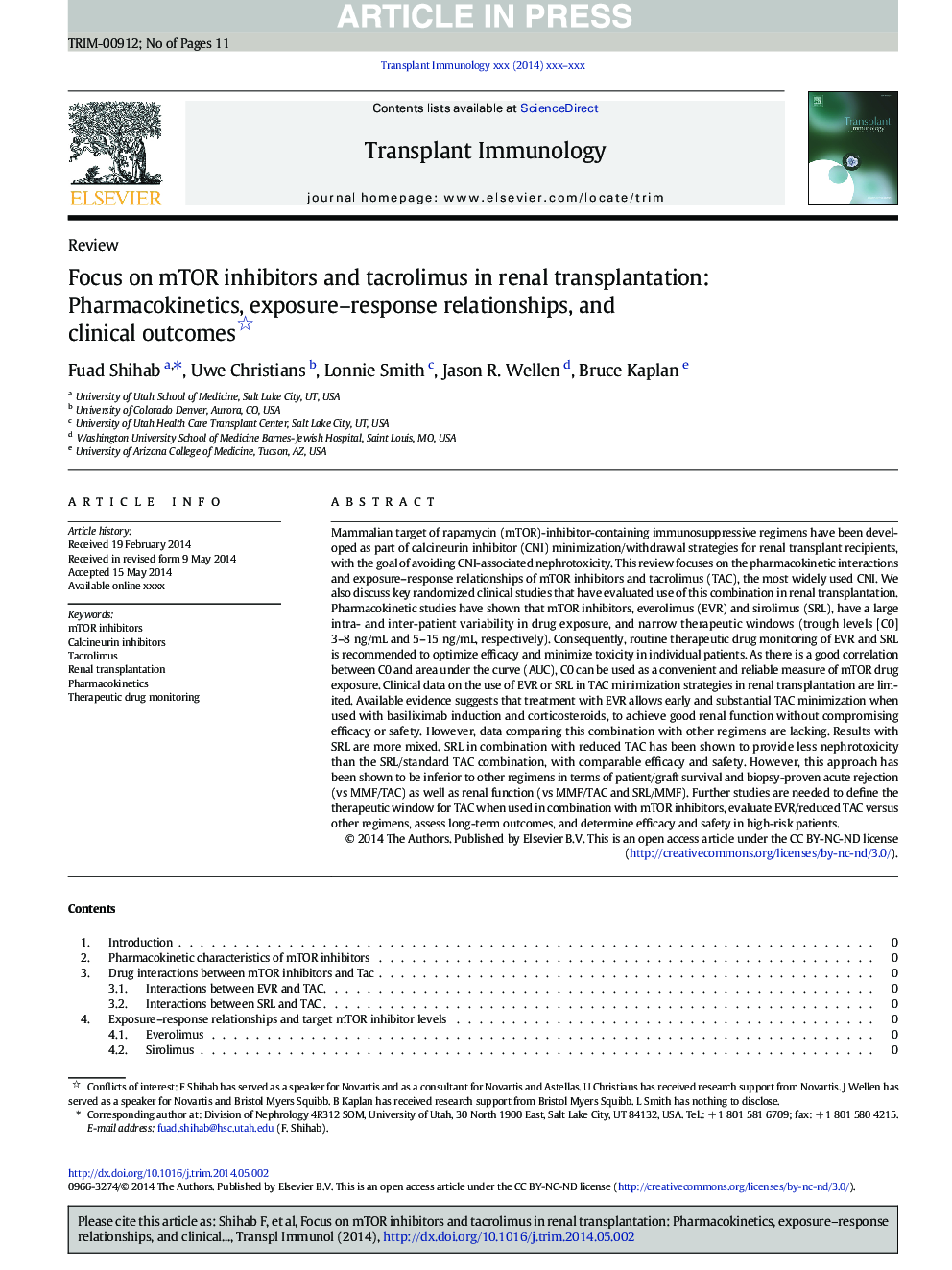| Article ID | Journal | Published Year | Pages | File Type |
|---|---|---|---|---|
| 6125996 | Transplant Immunology | 2014 | 11 Pages |
Abstract
Mammalian target of rapamycin (mTOR)-inhibitor-containing immunosuppressive regimens have been developed as part of calcineurin inhibitor (CNI) minimization/withdrawal strategies for renal transplant recipients, with the goal of avoiding CNI-associated nephrotoxicity. This review focuses on the pharmacokinetic interactions and exposure-response relationships of mTOR inhibitors and tacrolimus (TAC), the most widely used CNI. We also discuss key randomized clinical studies that have evaluated use of this combination in renal transplantation. Pharmacokinetic studies have shown that mTOR inhibitors, everolimus (EVR) and sirolimus (SRL), have a large intra- and inter-patient variability in drug exposure, and narrow therapeutic windows (trough levels [C0] 3-8Â ng/mL and 5-15Â ng/mL, respectively). Consequently, routine therapeutic drug monitoring of EVR and SRL is recommended to optimize efficacy and minimize toxicity in individual patients. As there is a good correlation between C0 and area under the curve (AUC), C0 can be used as a convenient and reliable measure of mTOR drug exposure. Clinical data on the use of EVR or SRL in TAC minimization strategies in renal transplantation are limited. Available evidence suggests that treatment with EVR allows early and substantial TAC minimization when used with basiliximab induction and corticosteroids, to achieve good renal function without compromising efficacy or safety. However, data comparing this combination with other regimens are lacking. Results with SRL are more mixed. SRL in combination with reduced TAC has been shown to provide less nephrotoxicity than the SRL/standard TAC combination, with comparable efficacy and safety. However, this approach has been shown to be inferior to other regimens in terms of patient/graft survival and biopsy-proven acute rejection (vs MMF/TAC) as well as renal function (vs MMF/TAC and SRL/MMF). Further studies are needed to define the therapeutic window for TAC when used in combination with mTOR inhibitors, evaluate EVR/reduced TAC versus other regimens, assess long-term outcomes, and determine efficacy and safety in high-risk patients.
Keywords
Related Topics
Life Sciences
Immunology and Microbiology
Immunology
Authors
Fuad Shihab, Uwe Christians, Lonnie Smith, Jason R. Wellen, Bruce Kaplan,
